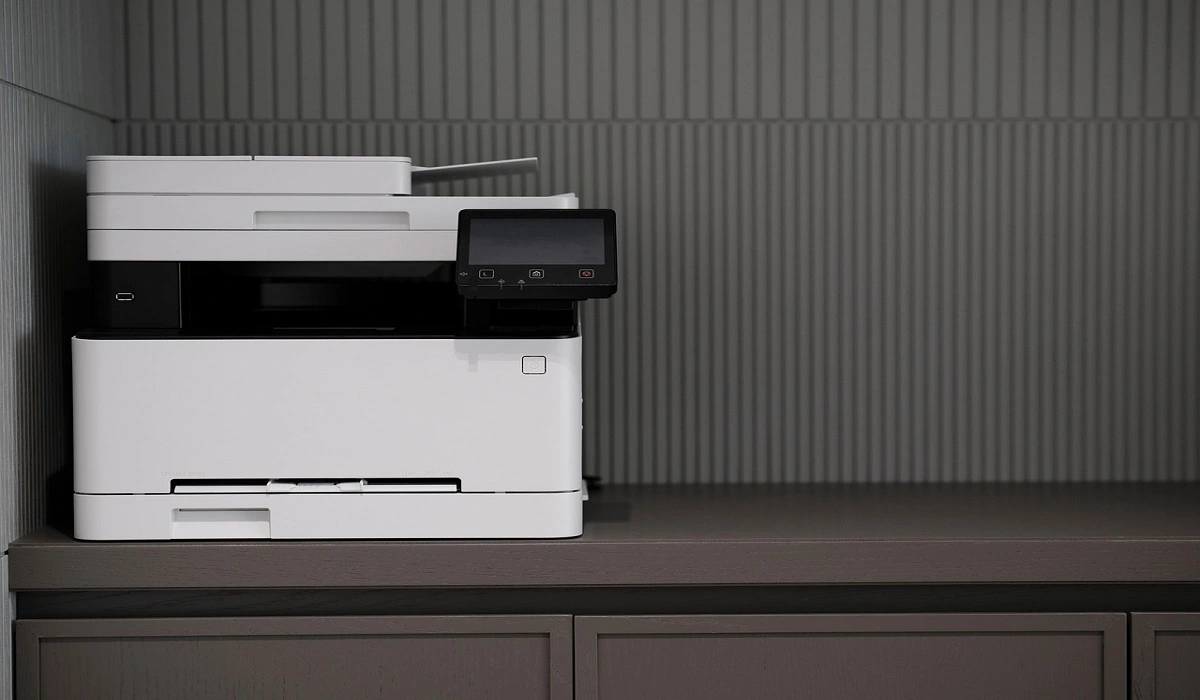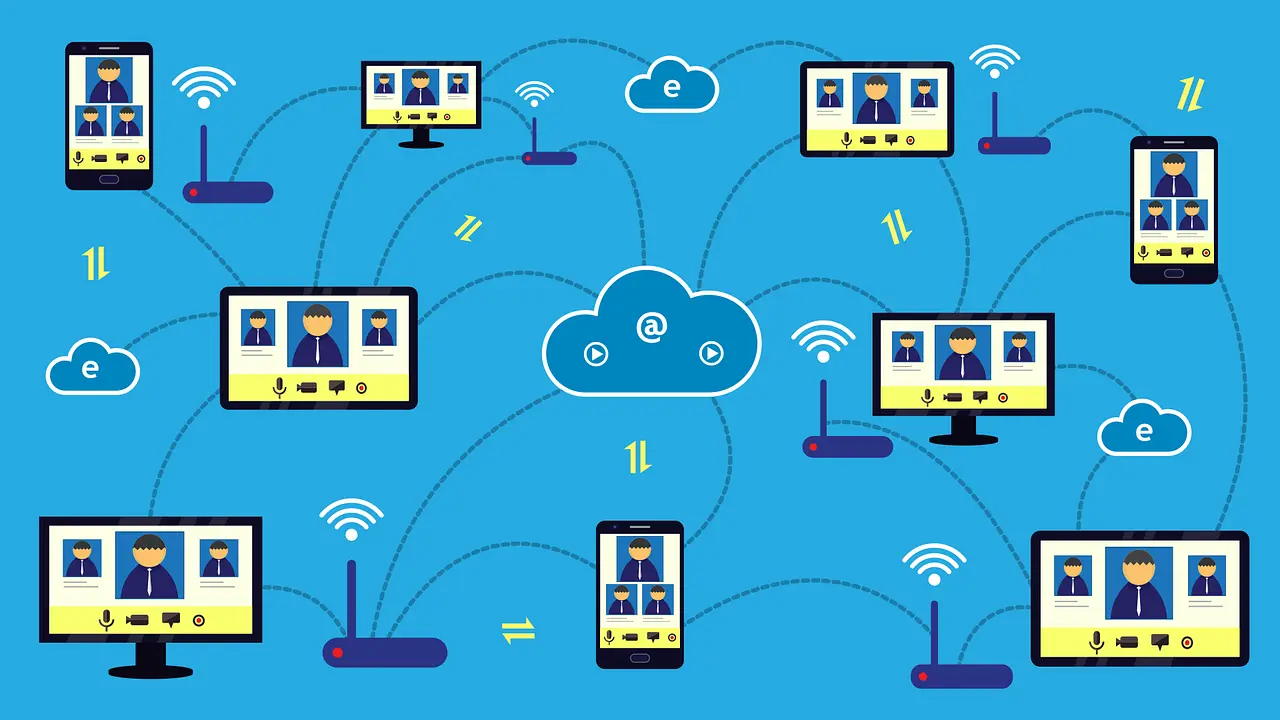How to Update Graphics Driver on Windows 11/10 [2025 Guide]
For the best PC performance, especially when gaming, graphic design, and video editing, you must keep your graphics drivers up to date. System instability, decreased speed, and incompatibilities with new apps can all be caused by outdated GPU drivers.
Understanding how to update graphics drivers on your Windows 10 or 11 computer is essential, regardless of whether you’re having graphical issues, poor gaming performance, or just want to make sure your system functions at its peak. This thorough guide will show you how to upgrade GPU drivers, fix common problems, and keep your graphics performance at its best.

How can you tell whether your graphics driver needs to be updated?
Keep an eye out for these indicators:
1. Inadequate performance when gaming
Outdated graphics drivers may be the cause of frame rate decreases, stuttering, or freezing in games that used to run smoothly.
2. Artifacts and Visual Errors
Driver problems are frequently indicated by unusual visual anomalies including flickering textures, color distortion, screen tearing, or geometric aberrations.
3. Application Errors
Your GPU driver may need to be updated if graphics-intensive apps like games, video editors, or 3D modelling software crash frequently.
4. Issues with Screen Resolution
A driver update may fix your system’s sudden inability to support your desired screen resolution or multi-monitor configuration.
5. Installing New Hardware
To guarantee compatibility, you must update your graphics driver when installing a new graphics card, display, or operating system upgrade.
How to Determine Which Graphics Card Do You Have?
Well, before you begin updating your graphic driver, the first thing you should know is which graphics card is installed in your system. Follow the methods shared below to learn how you can spot it:
METHOD 1: Making Use of Device Manager
- Choose “Device Manager” by pressing Win + X.
- Extend the category of “Display adapters”
- It will show the name of your graphics card or cards.

METHOD 2: Making Use of System Data
- Launch Run window using Win + R, type “msinfo32” then hit Enter.

- In Components > Display, navigate.
- To determine your graphics card’s identity, look for the “Name” field.

METHOD 3: Making Use of the DirectX Diagnostic Tool
- Launch Run window using Win + R, type “dxdiag” then hit Enter.

- Go to the “Display” from the top menu.
- Details about your graphics card will appear under “Device” header.

METHOD 4: Making Use of Command Prompt
- Go to the Settings menu, search for Command Prompt and open the utility.

- Type wmic path win32_VideoController get name in the Command Prompt window.
- To view the name of your graphics card, press Enter.

Note the model number and the manufacturer (Intel, AMD, or NVIDIA).
The Best Ways to Update Windows 11/10 Graphics Drivers!
Here are some of the most convenient and free ways to get graphics driver updates on your computer.
WAY 1. Making Use of Windows Update
The easiest approach to update GPU drivers is through Windows Update, albeit it might not always offer the most recent versions.
Update Graphics Drivers On Your Windows 10 PC:
STEP 1: Launch Windows Settings and go to the Windows Update module.
STEP 2: Select “Check for updates.”
STEP 3: Windows will automatically download and install any available driver updates.
STEP 4: If prompted, restart your computer.

Update Graphics Drivers On Your Windows 11 PC:
STEP 1: Launch Windows Settings and go to the Windows Update, followed by clicking on the Check for Updates button. module.
STEP 2: Click on the “Advanced options” option and then hit the “Optional updates” button on the next screen that appears.

STEP 4: At this step, look for any available driver updates under “Driver updates”.
STEP 5: Select the graphics driver you want to update and click “Download & install”.
STEP 6: Restart your computer to implement the changes effectively.
Windows 11 allows you to update all kinds of drivers automatically and manually.
WAY 2. Use Device Manager to Update the Graphics Driver on Windows 11/10
Another integrated method of updating drivers is offered by Device Manager:
STEP 1: Open the Device Manager windows and navigate to the Display Adapters category.

STEP 2: With a right-click, choose “Update driver” for your graphics card.
STEP 3: Observe the directions displayed on the screen & follow the actions to update the drivers.
STEP 4: If prompted, restart your computer.
Pro Tip: You may not have the most recent version of the driver if Windows is unable to locate updated drivers. Updates from GPU vendors are frequently made available before Windows does.
WAY 3. Update Windows 11/10 Graphics Driver Using Manufacturer Websites
To get your hands on the most up-to-date drivers, consider downloading the recent versions directly from your graphics card manufacturer’s website:
If you are using NVIDIA Graphics Cards, here’s what you need to do:
STEP 1: Go to the Driver Download page for NVIDIA.
STEP 2: Choose the model, series, and type of product you want.
STEP 3: Select your language and operating system.

STEP 4: Choose “Search” and then “Download” next to the suggested driver.
STEP 5: After downloading, launch the installer and adhere to the prompts displayed on the screen.
STEP 6: After installation, restart your computer.
You might be interested in reading: How to Solve NVIDIA Drivers Not Installing Issue?
If you are using AMD Graphics Cards, here’s what you need to do:
STEP 1: Go to the Driver and Support page for AMD.
STEP 2: Choose the model and type of driver you want.
STEP 3: Select the operating system that you want to use.
STEP 4: Press “Submit.”

STEP 5: Install the suggested driver.
STEP 6: Launch the installation and adhere to the prompts displayed on the screen.
STEP 7: After installation, restart your computer.
If you are using Intel Graphics Cards, here’s what you need to do:
STEP 1: Go to the Intel Download Center.
STEP 2: Enter the details for your Intel graphics card.
STEP 3: Find and download the relevant driver.

STEP 4: Launch the installation and adhere to the prompts displayed on the screen.
STEP 5: After installation, restart your computer.
Easy right? Never wondered if performing graphic driver updates was this quick!
WAY 4. Update Graphics Drivers Using Manufacturer Software Utilities
Fortunately, Graphics card manufacturers understand the need to provide ease to their respective users when it comes to updating drivers and offers dedicated software to keep them up to date.
Utilize the GeForce Experience from NVIDIA:
STEP 1: Install GeForce Experience after downloading it.
STEP 2: Open the app and log in.
STEP 3: Select “Drivers” from the menu.
STEP 4: Select “Check for updates.”
STEP 5: Click “Download” if there are any accessible updates.

STEP 6: Select “Custom Installation” or “Express Installation” (which is advised).
STEP 7: Observe the directions displayed on the screen.
STEP 8: After installation, restart your computer.
Hopefully, you have easily updated graphics drivers on your computer without any hiccups!
Utilize the AMD Radeon Software:
STEP 1: Install the AMD Radeon software after downloading it.
STEP 2: Open the application.
STEP 3: Select the “Settings” gear icon.
STEP 4: Click on “System” and then “Software & Driver”
STEP 5: “Check for Updates” should appear.
STEP 6: Install any updates that are available by following the on-screen directions.
STEP 7: After installation, restart your computer.

That’s it! You have successfully update GPU driver on your Windows 11/10 PC.
Utilize the Intel Driver & Support Assistant:
STEP 1: Install the Intel Driver & Support Assistant after downloading it.
STEP 2: Start the tool.
STEP 3: It will look for out-of-date drivers on your system automatically.
STEP 4: If there are any Intel Graphics updates available, click “Download” and adhere to the installation guidelines.

STEP 5: After installation, restart your computer.
This way you can easily perform the GPU driver update on your system.
How to Roll Back Graphics Drivers?
If new graphics driver updates cause problems, you can revert to a previous version to ensure everything works normally:
Method 1: Using Device Manager:
STEP 1: Choose “Device Manager” by pressing Win + X.
STEP 2: “Display adapters” is expanded.
STEP 3: Click “Properties” after doing a right-click on your graphics card.
STEP 4: Select “Driver” from the menu.
STEP 5: If “Roll Back Driver” is accessible, click it.
STEP 6: Observe the directions displayed on the screen.
STEP 7: Restart your computer.
Method 2: Making Use of System Restore:
STEP 1: Look for “System Restore” in the Windows search box.
STEP 2: “Create a restore point” should be selected.
STEP 3: Select “System Restore.”
STEP 4: Choose a backup point prior to the driver upgrade.
STEP 5: Observe the directions displayed on the screen.
STEP 6: After restarting, your system will return to its initial configuration.
Troubleshooting Typical Graphics Driver Problems On Your Windows 11/10 PC:
If you are facing issues while updating GPU drivers, here’s what you can do
ISSUE 1: Failure to Install the Driver
If you experience issues with installation:
- Make sure Windows is updated.
- Turn off your antivirus program for a while.
- Try using Safe Mode for installation.
- Before installing, use DDU to remove any current drivers.
- Make sure you’re downloading the appropriate driver for the Windows version and GPU model you have.
ISSUE 2: After-Update Graphics Artifacts or Glitches
If, following a GPU driver upgrade, you observe visual hiccups:
- Use Device Manager to revert to the prior driver version.
- Verify whether the graphics card is overheated.
- Use benchmarking tools to benchmark your graphics card.
- Think about using DDU to complete a clean installation.
ISSUE 3: Blue Screen of Death (BSOD) After Update
If a graphics driver update causes you to get BSODs:
- Enter Safe Mode to boot up.
- To return to a prior state, use System Restore.
- Use DDU to carry out a clean driver installation.
- Look for hardware problems like excessive heat or low power.
ISSUE 4: Poor Performance After Update
If a GPU driver update results in a drop in performance:
- Verify whether the update reset any graphical settings.
- Make sure the NVIDIA Control Panel’s “Prefer maximum performance” power management setting is selected.
- Make sure the dedicated GPU, not the integrated graphics, is connected to your monitor.
- If problems continue, think about reverting to an earlier driver version.
Benefits of Updating Your Graphics Drivers
Let’s first review the importance of executing routine graphics driver upgrades before moving on to the how-to sections for updating them:
1. Enhancement of Performance
Driver upgrades that maximize performance for new games and applications are frequently released by graphics card manufacturers such as NVIDIA, AMD, and Intel. These modifications can greatly increase system responsiveness, decrease stuttering, and boost frame rates.
2. Stability and Bug Fixes
Updates for GPU drivers frequently address reported errors, lags, and crashes. Maintaining up-to-date drivers helps keep your system stable and avoids annoying disruptions when working on crucial projects or playing games.
3. Support for New Features
Support for new features and technologies is often added by driver upgrades. For instance, driver updates frequently provide DLSS (Deep Learning Super Sampling), ray tracing capabilities, or enhanced video encoding/decoding performance.
4. Enhancements in Security
Graphics drivers, like any software, may include flaws that bad actors could take advantage of. Frequent updates keep your system safer by patching these security flaws.
AUTHOR’S TIP:
A few essential tactics will help both inexperienced and seasoned users while updating drivers, particularly graphics drivers. Because built-in tools like Device Manager can automatically locate and install the most recent drivers, using them is a smart place for beginners to start. To make sure you can go back, if necessary, it’s also a good idea to make a system restore point before updating. For specialists, keeping an eye on manufacturer release notes is essential to comprehending issue repairs and performance enhancements. Although using third-party driver updater tools might save time, caution should be exercised to prevent improper installations. After updating, keep a careful eye on system performance and think about reverting if problems occur. Users can improve system performance and reduce potential issues related to driver upgrades by heeding these guidelines.
CONCLUSION
To get the most out of your system, whether you’re a professional creative, a casual user, or an avid gamer, good graphics driver control is essential. To guarantee a seamless, reliable, and powerful graphics experience, take the time to comprehend your unique hardware requirements, set up a regular upgrade schedule, and master fundamental troubleshooting methods.
Although Windows has built-in tools for updating GPU drivers, the most recent features and improvements are frequently obtained by utilizing manufacturer-specific programs like AMD Radeon Software or GeForce Experience. When addressing chronic issues, keep in mind to set system restore points prior to big upgrades and think about doing clean installations.
Additionally, to save time and effort, think about adopting third-party driver updater software to automate the entire process of updating all of your PC’s drivers at once.
PEOPLE ALSO ASK:
Q1. Why is updating graphics drivers important?
A1. Updating graphics drivers guarantees compatibility with new applications, fixes bugs, boosts security, and improves performance.
Q2. How frequently should my graphics driver be updated?
A2. Regularly checking for updates is advised, particularly following significant software releases or when you’re having performance problems.
Q3. Is it possible to upgrade my graphics driver using driver update software?
A3. Indeed, the process of locating and installing the most recent drivers may be automated with driver update software.
Q4. What dangers come with using out-of-date graphics drivers?
A4. Compatibility problems, security flaws, and system crashes can result from outdated drivers.
RECOMMENDED READS:
Popular Post
Recent Post
How To Connect a Scanner to Your Device Windows 11 In 2026
Have you ever needed to scan a document in a hurry and did not know how to begin? Many people face this problem when they buy a new scanner or a new computer. Windows 11 includes helpful tools that make the process easy, but you must know the right steps. This guide explains each method […]
How To Connect to Your PC Remotely Windows [Complete Guide]
Many people need to reach their computer from far away. Well, yes! It may be for work, study, or personal use. Remote access helps you open files, use your apps, and control your system even when you are not near the device. It gives you the comfort of using your computer anywhere through the internet. […]
How To Connect to a Wi Fi Using a QR Code: Latest Guide
Wi-Fi is now a basic part of our lives. We use it at home, in offices, schools, and public places. But typing long passwords every time you connect can be annoying. Sometimes you might even forget your Wi-Fi password. That is where QR codes come in handy. With QR codes, you can connect to any […]
How To Connect a Wireless Printer Easily to Windows 11/10 PC
Printing tasks are part of most home and office work today. Isn’t it? Well, yes! Using a wireless printer makes printing easier and faster because you don’t need cables. It allows you to print documents and images from any corner of your room as long as your device and printer are connected to the same […]
How To Connect Your Windows 11 PC to a Projector or Another PC
A bigger screen can help you share your work with others. When you connect your Windows 11 PC to a projector, your screen becomes easier to view in a meeting room, classroom, or home. You can show slides, videos, notes, or entertainment. Most people do this for work or study, but it is also helpful […]
How To Set Up Dual Monitors Easily Windows 11/10: Complete Guide
Working with one screen can feel limiting. You switch between apps constantly. Your workflow slows down. A dual monitor setup changes everything. It gives you more space to work. You can see multiple things at once. This guide shows you how to set up dual monitors easily on Windows systems support. Windows 11 and Windows […]
How to Set Your Preferred Default Printer On Windows 11/10: Complete Guide
Printing documents should be simple. But many users struggle with their printer settings. Windows often picks the wrong printer as the default. This creates delays and wastes paper. Setting up your preferred printer as the default saves time. It prevents printing errors. This guide shows you how to set your preferred default printer Windows systems […]
Ashampoo WinOptimizer Review: Can It Really Speed Up Your PC?
Is your computer running slowly? Do programs take forever to load? You’re not alone. Millions of PC users face this problem daily. Ashampoo WinOptimizer claims it can fix these issues. This software promises to clean junk files, boost speed, and make your computer run like new. But does it really work? Or is it just […]
Screen Mirroring | Screen Cast Phone to Laptop Windows 11
screencast phone to laptopScreen mirroring is a great way to show your phone’s screen on a laptop. Right? Whatever you see on your phone, videos, games, apps, it shows up on the bigger screen too. It’s great for watching with friends, sharing ideas, or just getting a better view. Lots of people think it’s hard […]
Avast Cleanup PC Cleaner and Optimizer: Everything You Need to Know
Your computer gets slower over time. This is normal but frustrating. Files pile up. Programs start automatically. Your PC takes forever to boot up. You need a solution that works. Something simple but effective. Avast Cleanup promises to fix these issues. But does it really work? This guide covers everything about Avast Cleanup. You’ll learn […]



























